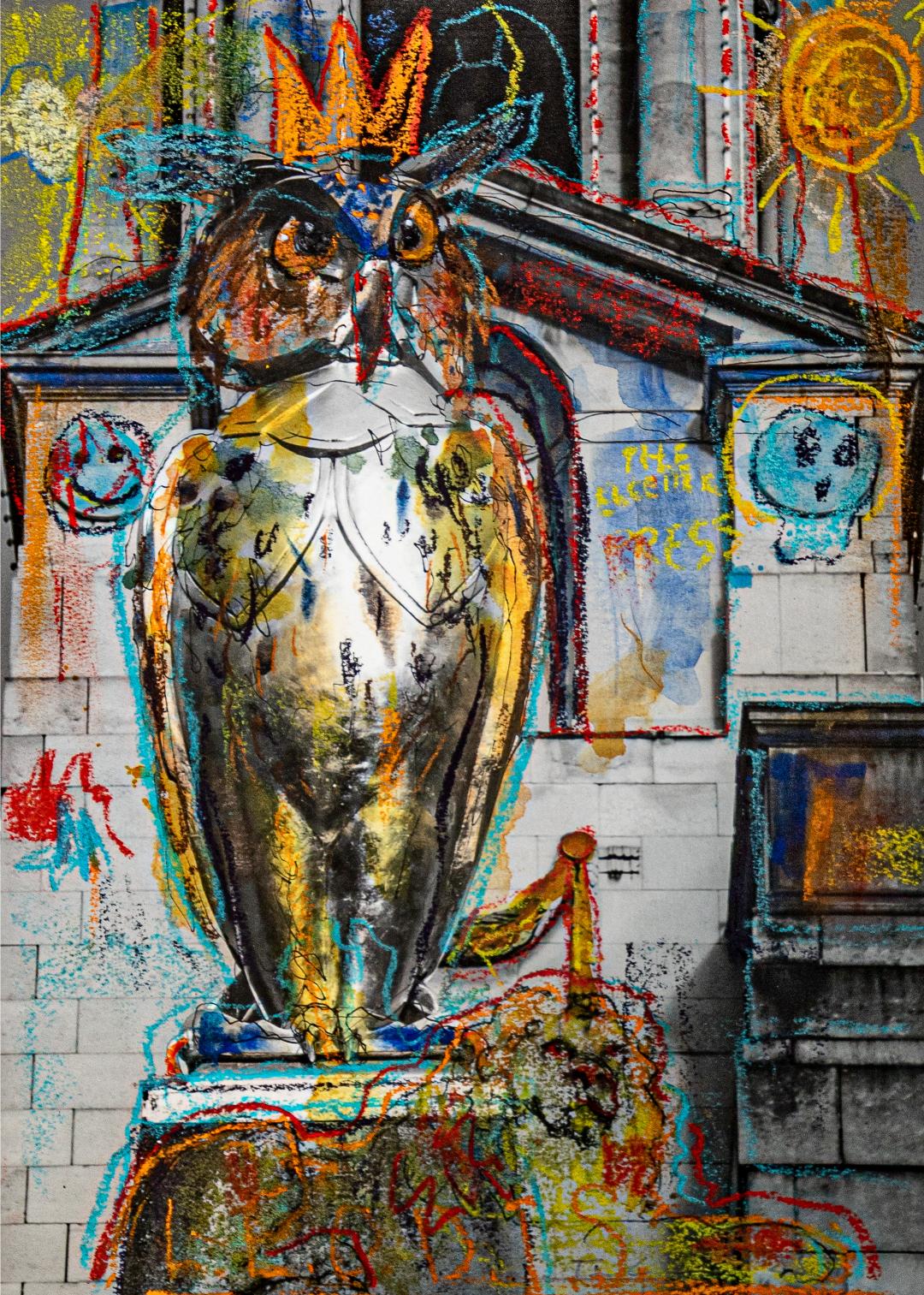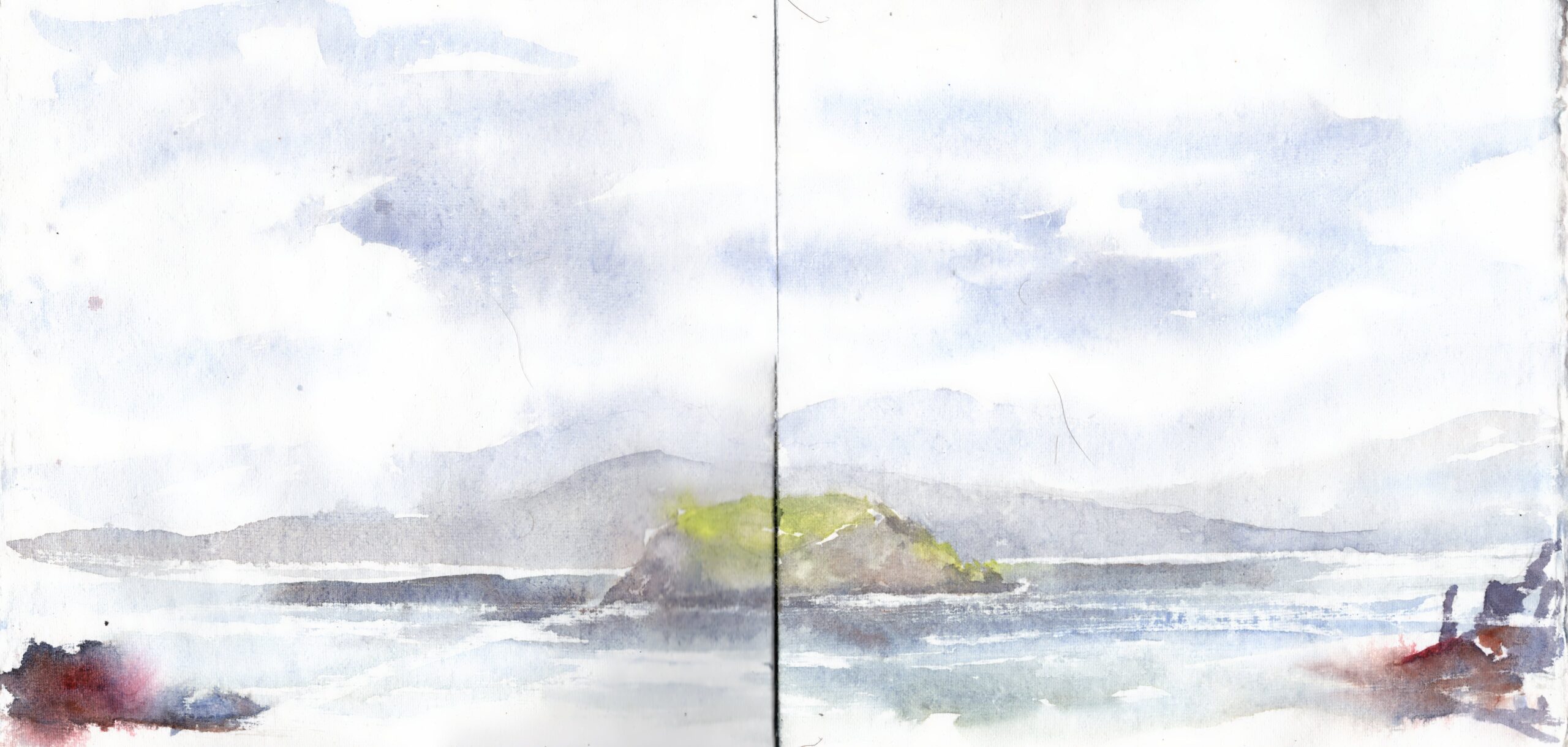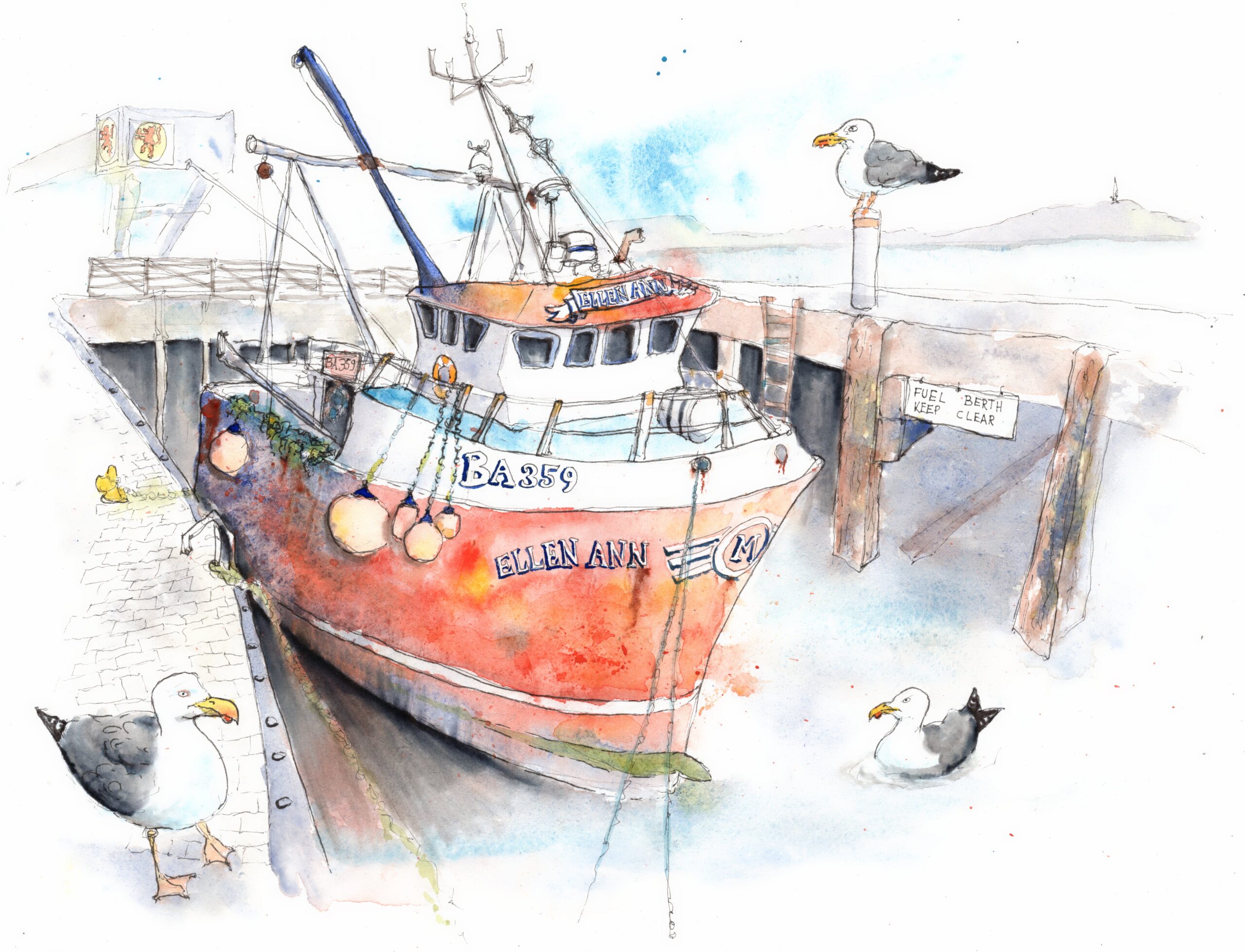On the merits of being on a boat in a rainstorm

Maiden Island, viewed from Oban Harbour
Arriving at the flat, I was greeted with a clear view over Oban bay, and beyond, to the island of Kerrera and the Sound of Mull. The first subject to look at was a little green and black rock jutting out of the sea called Maiden Island. There are several such forms across the waters in the gateway to the Hebrides, all of which bear similar names – variations on “Lady Rock” – grounded in some variation of the same grisly myth. It involves a member of the clan aristocracy becoming dissatisfied with his wife, and deciding that the best way to resolve things was to leave her on the rocks to drown. In some variations of the stories told by locals, I’ve heard of the wife being rescued by seafarers, in others, she makes the bold move of swimming for shore. Sometimes she survives, sometimes she exacts revenge. Sometimes she’s not so lucky. I couldn’t say how true these stories are, but they do tell us about the spell these islands, the last outposts on the edge of a vast ocean, hold over the imagination of those of us who look at them. Objects of both fear and desire, I find them completely irresistible.
The best way to see the islands is on a boat – you can get a sense of their scale and overall form. Even more important is the way we experience them with all our senses as weather systems cycle in and out, as they tend to do very rapidly in Scotland. I’m sure there are many artists who have used this as part of their practice – there are two well-known examples I’m aware of. Turner once claimed to have lashed himself to the mast of a ship as it sailed into a snowstorm as research for his incredible Snow Storm – Steam-Boat off a Harbour’s Mouth. More recently, the master of aquatint etching and my distant relative, Norman Ackroyd, has taken many boat trips from around the outer reaches of the British Isles to capture these places. It’s not easy to paint on a rocking boat in the rain and wind, but I’m walking in some well-worn footsteps here.

Gylen Castle
The first notable place we saw from the sea was Kerrera. At the end of the island stands the ruins of Gylen Castle, a fort of the Clan McDougall in the Middle Ages. Today, Kerrera is home to about fifty inhabitants, but the population probably triples or quadruples each summer day as tourists travel over to explore its hills and coast. It’s only a five minute ferry from Oban, but the last ferry sails mid-afternoon, so the residents must return to spend all their evenings on this isolated place. I wonder what it must be like to live there. The boatmen told me it’s not always easy, but, all things considered, is worth the sacrifices. I wonder what it was like in the Clan McDougall’s time, and I wonder how it is for the children travelling to the mainland for school each day.

Lismore viewed from Kerrera
My own walk on Kerrera was a bit too rainy to really enjoy most of the amazing scenery there. But as I reached the coastal path and beaches, the weather started to lift and I saw the bright white of the Lismore lighthouse gleaming through the clouds, a beacon inviting further exploration. It was quite an experience to see it through the breaking light across the sea. While the drizzle dropped onto the still-wet painting, a couple from Texas we’d been chatting to on the ferry passed by and took a look. They became interested, took my card, and ended up buying the piece I’d made of Oban town. It’s the second American home my work has gone to now, and it’s good to know a piece of mine will remind these folks of their own travels around Scotland!

Mull, viewed from the Sound of Mull
Mull is an astonishing sight from the sea. This ancient volcanic island has the largest mountain in the Southern Hebrides – Ben More. You can see its blue peaks in the distance from almost any vantage point in the vicinity, and one of my favourite things to do in Oban is to look out and watch it appear and disappear behind the clouds beyond Kerrera. Capturing this enchanting sight on a moving boat was no easy thing! Next time I go to Scotland, I think I will look into chartering a fishing boat rather than going with commercial outfits so that there’s enough time to give a slightly more considered response.

Heavy rain over Lismore
On the other hand, maybe the ‘inaccuracy’ is part of the point. In all these boat-deck paintings, I found I was trying to capture the atmosphere more than the exact likeness of the forms – the feeling of sea spray on the face, the movement of the boat against the Atlantic, the screech of seabirds and the freshness of the air. In one memorable effort, the boat was passing by Lismore, and the steady rain we’d been experiencing turned into a torrential downpour. Of course, I stayed on deck to finish my work, and the sketch was hopelessly ruined by the rain… Or maybe not? Maybe it captures something of that moment all the better for the rain drowning the paint and losing any sense of control I might have had. I don’t know how the viewer would read a picture like this, but I enjoy being able to re-live the experience of a rain storm on the edge of the Atlantic by looking at it.




